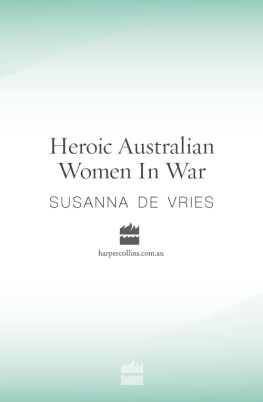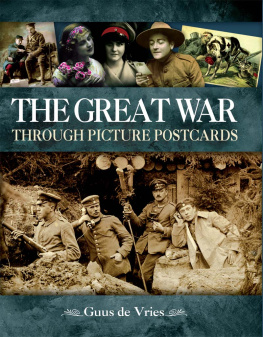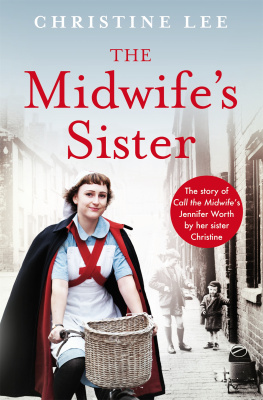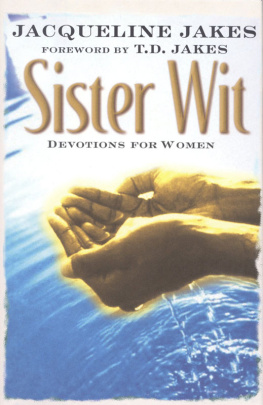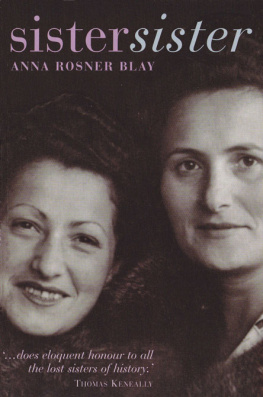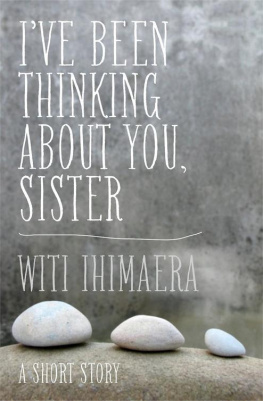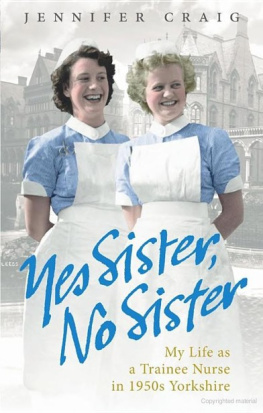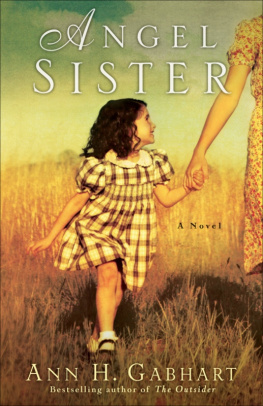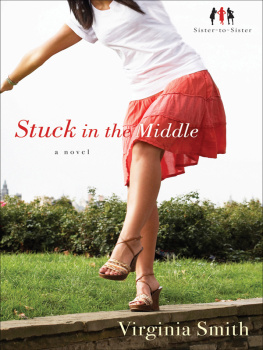This book is dedicated to my friend Alexander Freeleagus, AM, Greek Consul for Queensland, who has done so much to promote the life and work of Joice Loch, Australias forgotten heroine, whose life and work emphasise the strong bonds that bind Greece and Australia.
There is no poetry hereonly pain, misery and death.
SISTER ALICE KITCHEN, 1915
C ontrary to popular belief, for centuries women have been involved in war. Queen Boadicea (or Boudicca) took up arms to defend her family and lands. Florence Nightingale took a band of devoted women to nurse wounded soldiers in the Crimea. Mata Hari and Australias Ethel Cooper acted as spies behind enemy lines.
In 1900 a group of Australian nurses, including the redoubtable Sister Nellie Gould, accompanied the 2nd New South Wales Army Medical Contigent to the Boer War. On her return Sister Gould founded the Army Nursing Reserve, which supplied the first nurses to military hospitals in Egypt in 1914.
By the second year of the Great War, Australian nurses, doctors and volunteer ambulance drivers were helping wounded Serb soldiers in Greece. Why were they there?
The answer lay in the racial melting pot known as Sarajevo. The assassination of Austrian Archduke Franz Ferdinand on 28 June 1914 in the predominantly Serb town of Sarajevo would escalate a small local war of retribution into a world war that killed millions.
The pretext for waging war was the fact that Archduke Franz Ferdinand, heir to the Austrian empire, was murdered by Gavrilo Princep, a young Serb, and member of a terrorist gang called the Black Hand. Princep and his fellow terrorists wanted to use the assassination of the archduke to highlight the religious and racial grievances of thousands of Orthodox Serbians and Bosnians living under the rule of the Catholic Austro-Hungarian Empire.
Unfortunately, their plan misfired, bringing years of misery and conquest to the very people they aimed to help. As Princep was a Serb, Austria believed the Serb government must be involved (which it was not). The Austrians were outraged. As a result Austrian soldiers attempted to capture Belgrade, capital of Serbia. Initially they were repulsed, but they returned with German guns and planes and overran most of Serbia.
In the midst of winter the Serb Army, accompanied by a group of brave Australian nurses who had enlisted as volunteers, retreated through thick snow to Albania and then to the port city of Salonika (Thessaloniki), held by Greece. The retreat was forever after known as the March of Death, because so many died while crossing the snow-covered mountains.
It was against this background that Germanys Kaiser Wilhelm falsely claimed that France was planning to invade Germany. He seized the opportunity to strike first, sending German soldiers to march through neutral Belgium en route to capture Paris and northern France. While there they committed atrocities against women and children which feisty Australian-born war correspondent Louise Mack would document for Londons Daily Mail.
Britain defended Belgian neutrality and declared war on Germany. Australia, as part of the British Empire, supported Britain and, lacking a permanent army, raised what became known as the Australian Imperial Force (AIF) to fight in Europe. It was this forcea combination of men from every state in Australiawhich helped forge Australians together as a nation.
On the way to Europe there was a change of plan. Australian troops were sent by British High Command to the Gallipoli peninsula to fight against the Turks, who supported Germany and had been supplied with German armaments.
On Anzac Day we remember the brave men who fought at Gallipoli and in northern France, but few people remember the forgotten Balkan campaign in which Australian nurses, doctors, ambulance drivers and engineers took part, some giving their lives.
World War I was supposed to be an all-male affair. Experienced surgeons such as Dr Elsie Inglis, Dr Agnes Bennett and Dr Lilian Cooper, who volunteered to serve in the Army, were turned down by contemptuous recruiting officers and told to stay home and knit.

Exhibition poster dated 1918.
However, these determined professional women refused to take no for an answer. Led by Dr Inglis, who had spent some early years in Tasmania, they ran their own all-women hospitals. After being turned down by the British and Australian Armies a dozen or so Australian women doctors paid their own sea passages to Britain and enlisted with the privately funded Scottish Womens Hospitals for Foreign Serviceor SWHwhich ran field hospitals in France, northern Greece and Serbia. These were countries unable to staff their own hospitals and deeply grateful for the womens help. The SWH employed women as doctors, nurses, cooks and ambulance drivers. Later the determined Dr Inglis commissioned a time-and-motion study, which revealed that in the Scottish Womens Hospitals, five unpaid female VADs (Voluntary Aid Detachment workers) got through the same amount of work as eight paid male orderlies.
An enterprising young Australian, Olive King, offered to serve as an ambulance driver in the British Army and even to donate an ambulance. Her offer was brusquely rejected and she was told that women were not tough or smart enough to do such a demanding and stressful job.
Baffled and annoyed by her rejection, Olive decided to join the SWH and took her ambulance to France and later to Salonika in Greece, where she won five medals for her valour and service.
In 1916 the writer Virginia Woolf, angered by the pointless slaughter of her male contemporaries, called newspaper articles that glorified war preposterous masculine fiction. Woolf, a supporter of womens economic freedom, pleaded for another Joan of Arc to arise and lead the Allies to victory. However, Australian and British generals made sure that a second Joan of Arc would not interfere with their all-male war.
Before World War I few Australian women attended university or had careers or meaningful employment. Most girls stayed home and helped their mothers until they married. But after the men had gone to war the door of the Dolls House finally opened. All across Australia strong-minded young women left the kitchen sink or the drawing room and volunteered to serve in Europe as ambulance drivers, nurses, nursing aides, cooks or Red Cross workers. They also took on jobs within Australia that were previously reserved for men. Cowgirls or land girls worked on the land, dipping sheep and helping on farms in a thousand other ways; women played an important role, moved into offices, became telephonists and secretaries (once male occupations), journalists, even porters.
With so many men away at the front some women even managed to slip into places in schools of law and medicine as enrolments were low. Joan Rosanove, for example, who later became a QC, was allowed to study law at Melbourne University. In the world of journalism, Joice NanKivell Loch got a job on the Melbourne Herald, as did Katharine Susannah Prichard, and Sydneys Louise Mack was employed as Europes first female war correspondent by Londons Daily Mail.
Australian nurses served with distinction in France, Belgium, England, India, Burma, the Persian Gulf, Palestine, Egypt, Italy and Greece. They could enlist in the Australian Army Nursing Service (AANS) in Australias state capitals or pay their own fares to London and enrol with Queen Alexandras Imperial Army Nursing Service (QAIANS) or the Scottish Womens Hospitals (SWH).
Australian nurses found themselves in demand to work in at least a dozen private hospitals in France or on ambulance trains, funded by British aristocrats, by royalty (for example, the Queen of Denmark) or by French charitable organisations. In 1914, the British-run QAIANS employed 463 trained nurses, including a percentage of Australians. By 1916, that number had increased to 6864 nurses and 3580 nursing aides.
Next page
